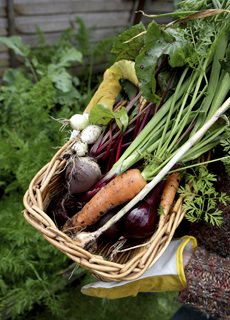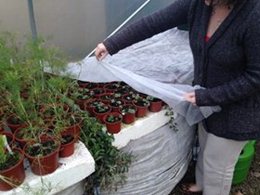With the arrival of autumn, you may think that your vegetable growing season is over. However, with a little preparation, the help of our yearly guide and a polytunnel, you can still sow and grow fresh produce during the colder months. This is because while many associate gardening with spring, autumn can provide a plentiful harvest while winter months are the perfect time for planning and sowing.
There are many varieties of vegetables that can be sown in autumn ready for a winter harvest, while other plants can be over-wintered – these are planted in autumn and remain dormant until the spring. So, if you’re yet to start sowing or growing your seasonal veg, then fear not, as you still have time to reap the best of the winter season.
Ready to get started? If you’re wondering what to grow in a polytunnel in September, October and beyond, we’ve compiled this guide to help you extend your growing season.
What to Grow in a Polytunnel Over Winter
A polytunnel can create the ideal sowing and growing conditions for winter vegetables, shielding them from cold, frost and wind. However, winter growing can be daunting. To help, here’s what to grow in a polytunnel in winter.
Autumn and Winter Vegetables
In addition to herbs like coriander, salad leaves and lettuce, which can be grown all year, there are a couple of other delicious crops that can be sown in autumn and enjoyed during winter.
 Radish
Radish
These are a popular choice for growing during the winter, due largely to their fast four-week harvesting period and can be sown as late as October. To enjoy in November and December, plant in your polytunnel 20cm apart for optimal growth.
Turnip
Turnip can be sown and planted during early autumn, ready to be picked in winter. A relatively easy plant to grow, these can be sown directly into the ground when using a polytunnel. To produce the best crop, it’s recommended to space plants 25cm apart.
Carrots
Carrots are an ideal late-season choice, particularly because they are a hardy vegetable and can thrive in colder temperatures, even in frosty conditions. Plant in the early autumn with a minimum of 10cm between them and keep the soil moist for the best harvest.
Over-Winter Vegetables
Winter provides green-thumbed individuals with the opportunity to get a head start for spring. This is referred to as overwintering, as plants can be sown and stay in the ground during winter, ready to harvest in spring. However, due to cold temperatures, only certain crops can be over-wintered. This includes the examples below.
Garlic
A low maintenance plant, garlic is an ideal choice for over-wintering. It also thrives in colder weather, with temperatures below 10 degrees Celsius boosting growth. Space approximately 15cm apart and harvest in the summer for fragrant garlic.
Broad Beans
Ideal for later in the season, broad beans can be planted up until November and will be ready to pick in the spring. For best results, sow indoors to protect seedlings from the elements, then plant in your polytunnel with a 15cm gap.
Kale
Easy to grow and weather hardy, kale is an ideal choice for over-wintering. To start the kale off, use indoor trays or propagators for sowing before transferring to your polytunnel. If you’re lucky, you may get a small winter harvest, but expect to see your kale sprout in the spring.
In addition to garlic, broad beans and kale, onions and peas are also ideal for over-wintering, providing a plentiful harvest in early spring.
Getting Your Polytunnel Ready for Winter
 While you may now have more of an idea of what to grow in a polytunnel over winter, it’s also important to prep your polytunnel, to provide the optimum conditions for autumn growth and over-wintering plants.
While you may now have more of an idea of what to grow in a polytunnel over winter, it’s also important to prep your polytunnel, to provide the optimum conditions for autumn growth and over-wintering plants.
- Clean up your polytunnel. With fewer hours of sunlight, making sure your polytunnel is clean allows your crops to get as much light as possible during the day.
- Check for damage. If there are any tears in your polytunnel cover, this will allow the cold and wind to enter, which could damage plants and put the cover under stress in windy weather. As such, check for damage and carry out any necessary repairs. Repair tape is ideal for repairing tears in the polythene. Alternatively, it may be time to get a replacement polytunnel cover or invest in a new polytunnel.
- Get the temperature right. Although heating a polytunnel can be expensive, you could boost the internal temperature with an additional insulating layer such as bubble wrap or a protective fleece blanket.